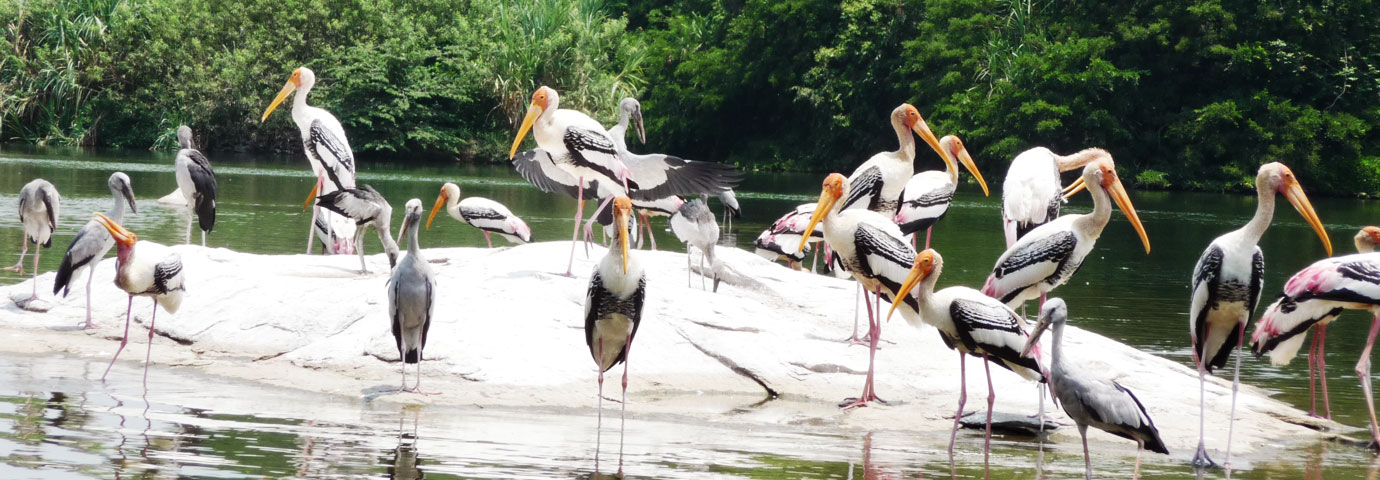Ranganthittu Bird Sanctuary, in the southern Indian state of Karnataka, is an important tourist destination from Mysore city or the adjoining Vrindavan gardens, both of which are barely 20 km away. The bird sanctuary, situated on the banks of the Kaveri River, includes of a group of six islets as well.The isolated islets and the abundance of aquatic insects during the monsoon make Ranganthittu a favorite abode for birds. Ranganthittu attained the status of a bird sanctuary in 1940, courtesy of the visions of India's noted ornithologist-Dr. Salim Ali-who, during his survey of the birds of Mysore, advocated for the establishment of such a sanctuary. The sanctuary is now a paradise for wildlife enthusiasts, nature lovers and bird watchers. The large number of birds at the sanctuary appears to have attracted a sizable number of tourists as well. A total of 2,080 foreign tourists, besides 2,02,417 domestic tourists, had visited the bird sanctuary in 1999-2000, according to officials. Balmuri Falls are a must visit in the park.
Tourists Attractions In Ranganthittu
Balmuri Falls are amongst the primary attractions at the Ranganthittu Sanctuary. Balmuri Falls is actually a man-made reservoir at Ranganthittu. Your travel to Ranganthittu is complete after at visiting the Balmuri Falls. The sanctuary, even though it lacks a sprawling area, is a delightful place to visit. What makes it inviting is that it is an important Asian nesting and breeding ground for migratory birds from all across the earth. Some species of birds that are known to have made Ranganthittu their breeding abode are spoonbills, open bill storks, darters, white Ibis, little cormorants, egret, heron, partridge, river tern, stone plougher, snake bird, and other exotic bird species that fly to the sanctuary in large flocks. Park officials and experts have traced the origins of some of these bird species to as far as Siberia, Australia and even North America. A record number of 1,400 painted storks visited the area in 1999-2000. Local inhabitants like kingfishers and peacocks are also found in this avian bliss.
Migratory birds lay their eggs on islets in the river. The authorities have created additional islets at the sanctuary to make way for more number of birds to lay eggs and breed. The birds begin arriving in the sanctuary in December every year. The migratory birds lay eggs and breed until they finally move out of the sanctuary with their little ones in August, only to return yet again the following year.
Boats are available at the sanctuary to take the tourists for a ride along the river and the islets, where they can witness trees full of beautiful birds of myriad varieties. Most of the oarsmen are also excellent guides and can provide tourists the exact location as to where the birds may be spotted. The Kaveri riverbank also offers excellent spots for picnics
Best Time To Visit
There are no extremities of temperature at Ranganthittu Sanctuary. The temperature stays between the 23-29°C range for most parts of the year. In June, when the southwest monsoon peaks throughout Karnataka state, heavy to very heavy rainfall, accompanied by waterlogging and mild flooding, has been reported from the area.
How To Reach
Private taxis, which are freely available in Mysore and Bangalore, are the most convenient mode of transport for reaching the sanctuary. Since the sanctuary is on the Bangalore-Mysore highway, approach is through either of the two cities. The nearest rail junction is Mysore (18 km). The nearest international airport is Bangalore (125 km).


